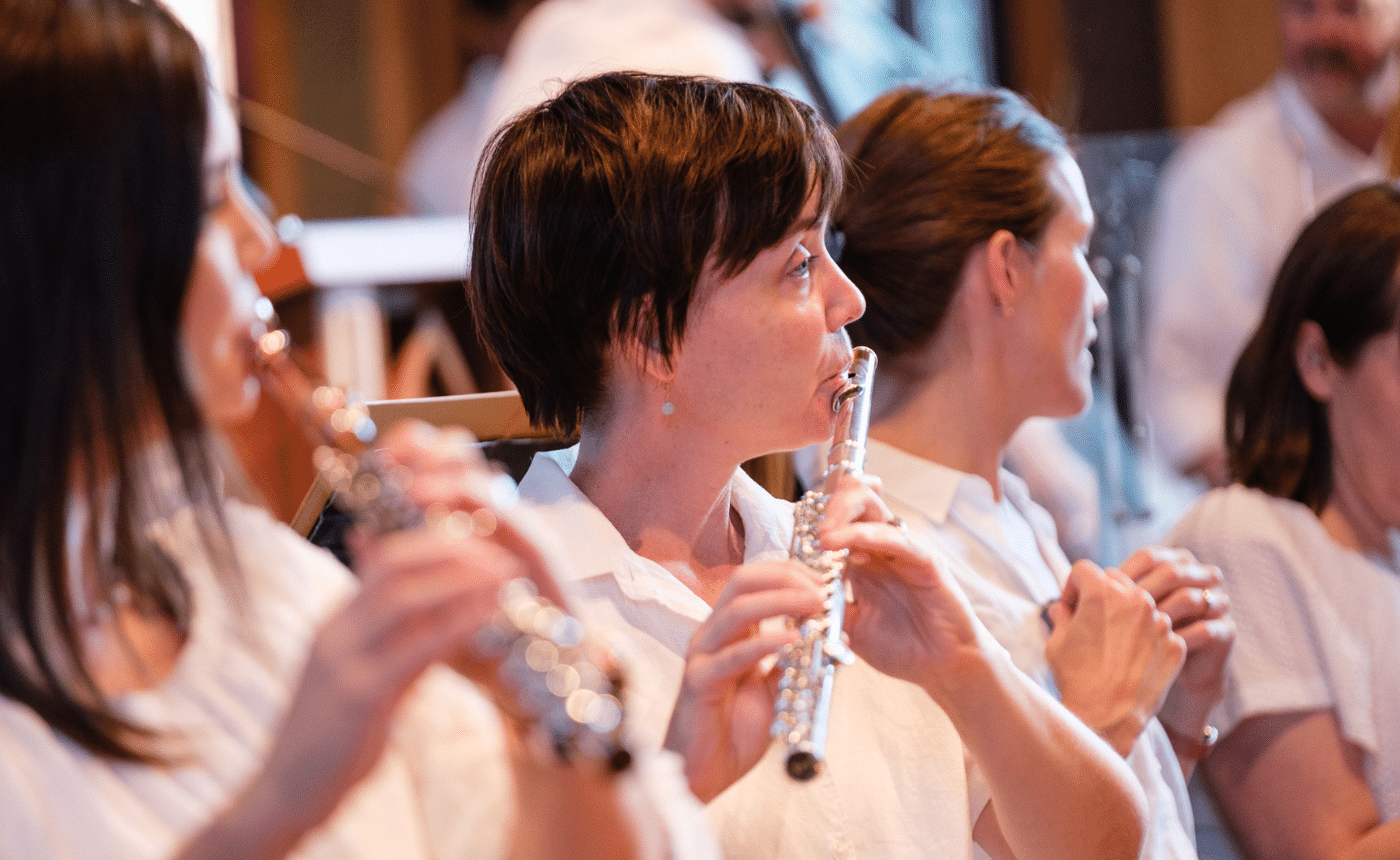Tchaikovsky-Symphony No. 5 in E minor Opus 64
Pyotr Ilyich Tchaikovsky (1840 – 1893): Symphony No. 5 in E minor, Opus 64
Instrumentation: 3 flutes, 3rd doubling piccolo, 2 oboes, 2 clarinets, 2 bassoons; 4 horns, 2 trumpets, 3 trombones, tuba; timpani; strings
Performance time: 47 minutes
Background
How is it that a composer who died more than a century ago sparks new debates among listeners? It’s all the more surprising in the case of Tchaikovsky, whose greatness and popularity are not in doubt. But his life and works continue to provoke speculation and even controversy. Each year sheds more light on Tchaikovsky’s torment over his sexual identity and his unhappy marriage. During his lifetime these were taboo subjects, especially in his native Russia, but more recently they have spurred analysis and gossip—even movies. When Ken Russell found Tchaikovsky’s life ideal for a juicy, highly sexualized biopic, he had to call it The Music Lovers to differentiate it from a 1969 Russian feature titled Tchaikovsky. Even the composer’s death remains the subject of partisan disagreement, though less hotly debated than it once was: Was it suicide, or wasn’t it?
Regarding Tchaikovsky’s standing among the great composers, it’s interesting to note that his two most popular scores among American listeners—The Nutcracker and The 1812 Overture—were works he considered failures and professed to dislike. But when it comes to The Nutcracker, critical opinion has overridden Tchaikovsky’s, and his three great ballet scores, along with his operas and symphonies, are his masterworks. And though it is dangerous to look for composers’ lives in their music, we can safely say that Tchaikovsky’s symphonies come closest to being a kind of musical diary of an incessant brooder.
Tchaikovsky was mindful of his image as a composer whose reputation would survive him and as a public figure in Russian society. He also felt that Beethoven had elevated the symphony to a form reserved for big, philosophical ideas expressed in a dramatic arc. Before writing his fourth symphony, which preceded the fifth by more than a decade, he had been impressed with the musical representations of fate that he had heard in Beethoven’s Symphony No. 5 and Bizet’s Carmen, and he made his own fourth symphony an account of a fateful struggle for his own destiny and his yearning to live a life of mature respectability. Progress on it was agonizing, and he found it difficult to resolve. But fate was a theme he would return to in his fifth symphony and in the sixth, his last.
Tchaikovsky began work on his Symphony No. 5 in May of 1888. He had just returned to Russia after an extensive and highly successful European tour, and moved into a new house in the town of Frolovskoye after visiting the larger city of Tbilisi. Musicologists note that he encountered difficulties in the symphony’s composition at first, but later gained momentum; it seems likely that any obstacles would have been consistent with moving back to Russia and into a new house after his extended absence. These days we might say he was “getting his seat adjusted.”
What to Listen For
The sheer abundance of melody in Tchaikovsky’s symphonies can eclipse their superb craftsmanship, but it is ever-present, both subtle and spectacular. Like all his symphonies, Tchaikovsky’s Fifth is deeply personal and is characterized by a sense of yearning. It is unified by thematic elements that return in every movement, and we can associate these with Tchaikovsky’s contemplation of personal fate.
Even so, we can sense his struggle in expressing the authenticity and urgency of this quest, and, in the fourth movement, resolving it; he worried that the finale might seem overstated or insincere. But the result is a glorious “blowfest.” This is a term your annotator first encountered in the late 1980s in Baltimore, while studying and teaching at the Peabody Conservatory. It was more respectful than it sounded, and it was lovingly applied to this symphony, which gives all the players in the pit— not just the brass and woodwind players, who literally blow into their instruments – a chance to play loud, long and hard in passages with high stakes. In Tchaikovsky’s Fifth, any choir in the orchestra can sound heroic. In the criticism class where I learned this term, I was the only student who had not played professionally in an orchestra, and my classmates’ enthusiasm for Tchaikovsky’s symphonies, and for the Fifth in particular, surprised me. Not that I didn’t like these works, but as a listener I had long observed a certain snobbish resistance to them among the most eminent music critics—a group that everyone in the class aspired to join. In writing by the rightly revered critic and scholar Nicolas Slonimsky, a compatriot of Tchaikovsky’s who loved Russian music and whose knowledge of it was encyclopedic, you can almost see his lip curl as you read his description of Tchaikovsky as a prolific melodist. His implication: Sure, great melodies are okay if you like that sort of thing.
Of the musical values that critics such as Slonimsky look for in ranking a great symphony, two are beyond dispute in Tchaikovsky’s Symphony No. 5: beauty and craft. Yes, Tchaikovsky’s melodic gifts are abundant here, along with his harmonic mastery and his ability to sustain a large symphonic structure.
In the symphony’s first movement, which moves from an andante to an allegro pace, the “fate” theme comes at us with almost assaultive intensity and a sound that somehow combines funereal gravity with suspense about what might come next. The symphony progresses from this somber opening through an andante second movement that is full of Tchaikovsky’s poetic melancholia. But there is also a feeling of emotional instability here, as though the sadness we have heard so far, for all its brilliance, need not inevitably prevail. Movement three, dominated by three waltzes, allows us further opportunity to relax, breathe and contemplate the emotional journey on which Tchaikovsky is taking us. When we reach the final movement, it is clear that the music is reaching for resolution. Are you convinced by this expression of triumph? Once it comes, it has taken us from the symphony’s ominous opening in E minor to E major.
Like most listeners, I can only imagine the pleasures of playing Tchaikovsky’s Fifth. But surely it is almost as much fun to hear. Whether it ranks among the canon’s great symphonies is for each listener to decide. But according to critical orthodoxy, the one element that has been openly doubted—indeed, seems always to be in question when Tchaikovsky’s compositions are scrutinized—is its authenticity of emotion. Throughout the Fifth we hear Tchaikovsky earnestly seeking to probe feelings of profundity and depth, especially in its outer movements. Whether or not we are persuaded, there seems little doubt of Tchaikovsky’s sincerity of feeling. Among the many doubts that tormented him were those raised by critical opinion; he seems to have been so credulous and insecure that he believed his harshest critics and declared the symphony a failure. Modern audiences and musicians have overruled him and his critics, making Tchaikovsky’s Symphony No. 5 one of his most popular works.












